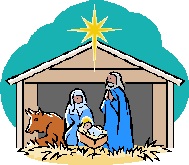The Humility of the Blessed Virgin Mary—The Most Humble Person who ever Lived
We know that the Blessed Virgin Mary was, without doubt, the perfect disciple of Jesus in the practice of all virtues. Ironically, the most profound and important of all the virtues, the actual bedrock of their very existence, is the virtue of humility. We never really hear of this virtue in relation to Our Lady even though it is the one virtue that places her above all other creatures (excluding Her Son) from the beginning to the end of time. St. Bernard says, “Humility is the foundation and guardian of the virtues, and with good reason, for without it no other virtue can exist in a soul.”
For some reason, the great feast of Our Lady of Humility is not celebrated very much today. Matthew 11:29 reads, “Take My yoke upon you and learn of Me for I am Meek and Humble of Heart …” The first true disciple of Jesus is His very own Mother.
Humility is probably the most difficult virtue of recognizing because the more profound it is in a person, the less visible it presents itself; willingly and quietly going to the back of the line so others can go first might be an example. In our present-day world, we are aware that exaltation and devotion are given to our Blessed Mother. However, her life on earth was not that way at all. And this is where we must look so we can understand the virtue of humility as practiced by the Mother of God. That is because all virtues for our common Catholic/Christian life can be found in Mary.
If we look at Our Lady’s life, we can see that everything she ever did was predicated on grace. Her words to the Angel Gabriel were, “Behold the handmaid of the Lord; be it done to me according to thy word.”
A handmaid is a servant and Mary immediately gave herself over as the “handmaid of the Lord.” From that moment forward she would do only what her God asked and would remain ever ready to fulfill any further wishes, never using her unique position to promote herself or her own ambitions.
How many of us have undertaken personal quests because we are driven by our pride? We might perceive ourselves as “great” singers, or athletes, or writers, or doctors, and even become jealous of those who attain loftier positions or more praise than we do. Even priests and religious have aspired to lofty positions, not because of grace but rather, because of their own vanity.
There are many sets of virtues within the Catholic faith. Among those virtues are the Contrary Virtues. Foremost among these are humility against pride. The great evil of pride is that it causes us to be unable to detach ourselves from the good works we are actually doing. For example, knowing the public praise you might receive for completing a certain project becomes your motivation to help others, causing you to become a slave to your own pride. The “good work” was not done for the glory of God but rather, for the aggrandizing of yourself.
If we step back and do our best to look at the Blessed Mother’s humility, we see that all she ever did was to love and serve God: always, and at every moment. She was a selfless homemaker taking care of her husband and her son. She quietly and dutifully observed her position and her Jewish faith. She knew who she was and was aware of what her purpose had become. She was with Jesus as he went through His passion and death. She was at the foot of the Cross when He died for us. She held His lifeless body, cradling His bloodied head in her motherly arms.
There are “good works” for which we are not called. Pride steps in and drives us to do things that may lead to impatience, criticism of others, gossiping, back-biting, and other sinful things. If we work on building our humility we can grow to fear this type of behavior.
How can we build and reinforce our humility? We should immediately turn to the Blessed Virgin Mary. She is our Mother and will help us. Her example is one of selflessness — always selflessness. Everything she did was out of obedience and for the glory of God. Let us contemplate Our Lady more each day. Let us also strive to follow, even though unattainable, her virtue of Perfect Humility.
The Feast Day of Our Lady of Humility, also known as The Humility of the Blessed Virgin Mary, is July 17.
Our Lady of Humility, pray for us.
Copyright 2018 Larry Peterson



